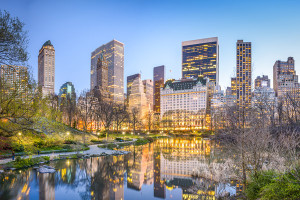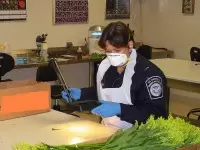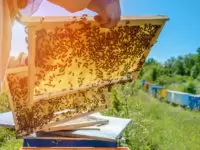
Municipal Forestry is the management of urban forests, commonly found in local parks and small forests located in an urban setting.
What Does a Municipal Forester Do?
Municipal Foresters manage and care for city trees, which may be located along streets or in local parks. Typically they must plan and manage the planting, pruning, and removal of any trees located in a public area.
Municipal Foresters also protect city trees by possessing a general understanding of the ecology of their region. In addition, a Municipal Foresters may work as advocates for the importance of trees in the community.
Where Does a Municipal Forester Work?
Municipal Foresters spend the majority of their work days outdoors. They are often exposed to all kinds of weather year-around, though they will likely be the most active during the spring season. Many are required to wear hard hats, earplugs, and goggles for safety purposes, since risk of injury is higher than the average occupation. Those using special chemicals or pesticides to care for trees will also be required to follow strict safety procedures. Most Municipal Foresters work on a full-time, regular schedule.
What Is the Average Municipal Forester Salary?
Municipal Foresters, who fall under the broader BLS category of forest and conservation workers, earned a median salary of $30,640 as of May 2020. Most Municipal Foresters work for their local governments or private companies.*
What Is the Job Demand for Municipal Foresters?
Job demand for Municipal Foresters is expected to decline about 8 percent between 2020 and 2030.* Many cities and communities are reserving more park space than ever before and are also planting a wide variety of trees that will require upkeep, thus increasing demand.
What Are the Education Requirements to Become a Municipal Forester?
Many Municipal Foresters have little formal education and simply learn through working on the job. Some Municipal Foresters wishing to become an ISA Certified Arborist will pursue a bachelor's degree in arboriculture, horticulture, landscape architecture, or other related field. However, the ISA also accepts three or more years of full-time work experience a fulfillment for their requirements.
Many Municipal Foresters also possess a Commercial Driver's License, allowing them to transport small trees and heavy equipment from place-to-place as needed.
Degrees Related to Municipal Forestry
What Kind of Societies and Professional Organizations Do Municipal Foresters Have?
Municipal Foresters and those who wish to become Municipal Foresters can look to the following websites for guidance:
- Society of Municipal Arborists (SMA) - The SMA is a North American professional organization of Municipal Foresters and others related to the field. The group promotes networking among Municipal Foresters, as well as numerous continuing education opportunities. The SMA also offers special accreditation programs and other invaluable resources, such as industry-specific publications.
- International Society of Arboricultural (ISA) - The ISA is a non-profit arboriculture organization dedicated to promoting further awareness about the importance of the profession. The group offers industry-specific events and public outreach programs for current members to enjoy. In addition, the ISA provides a number of professional certifications and credentials for arborists of all kinds.
- Tree Care Industry Association (TCIA) is a trade association that brings together a number of different tree care firms and companies to create a better tomorrow for those in the industry. The group offers safety programs, continuing education, and helpful management information for arborists of all kinds.
*2020 US Bureau of Labor Statistics salary figures and job growth projections for forest and conservation workers reflect national data not school-specific information. Conditions in your area may vary. Data accessed September 2021.





